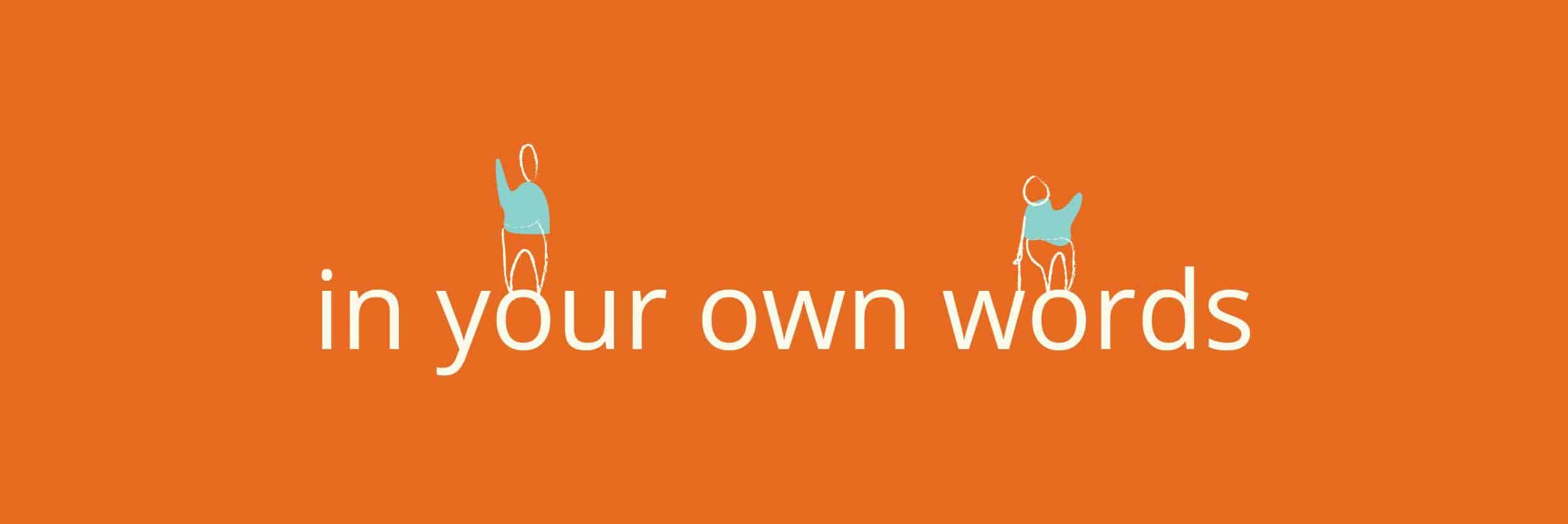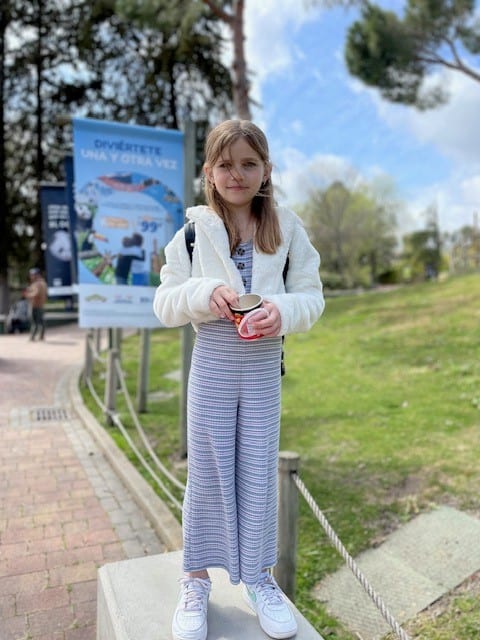Reflecting on Our Family’s First Rare Disease Day
By Amanda Zaleski, PhD, MS
In the clinical world, a “zebra” refers to an unusual or rare medical condition or diagnosis. Based on the maxim, “When you hear hoofbeats, think of horses, not zebras”, it suggests common diagnoses should first be considered before rare ones. However, in some cases, the unexpected or rare diagnosis turns out to be correct. My daughter, Zoey, is a zebra.
Zoey’s Clinical Presentation
On Friday the 13th of January of last year, our very healthy and active 10-year-old daughter presented to the school nurse complaining of back pain. Within a few minutes, her pain evolved to include “pins and needles” sensation down to her toes with complete flaccid paralysis of her left leg. We rushed her to the emergency department and thus began our diagnostic odyssey.
Despite extensive testing (i.e., labs, lumbar puncture, imaging, etc) and six different neurology consults, she was deemed a medical mystery until a partially completed EMG test yielded enough information towards a potential diagnosis – a rare presentation of a rare variant of Guillain-Barré syndrome, Acute Motor Axonal Neuropathy.
She was started on a five-day course of IVIG therapy and on the third day she got out of bed for the first time. With the support of an amazing team of occupational and physical therapists, she gained enough strength to be discharged home after her 13-day inpatient stay. Three months later, repeat imaging revealed hyperintense lesions in the thoracic region (T2-T3) of her spinal cord, calling into question a more likely diagnosis of transverse myelitis.
We recently celebrated her one year “Leftyversary”, reflecting on all the knowns and many more unknowns. With intensive outpatient physical therapy, she miraculously learned to walk again. With modified dance class and personal training, she continues to show up, work hard, and squeeze out incremental functional improvements.
Some impairments will likely be permanent, including temperature dysregulation, bladder dysfunction, exertional fatigue, and functional deficits on the left side (i.e., drop foot, weakness, muscle rigidity, and clonus). As an added bonus, she cannot feel temperature, pain, or “wetness” on the right side of her body.
On Caring for a Child with a Rare Disease
As a mother, I was not prepared for the heartbreak of navigating this new life while simultaneously grieving life before. Nothing captures this sentiment more than the unsolicited Apple photo memory; interpreted as, “Hey, I know you’re sad, but remember when, ON THIS DAY, your daughter was perfectly healthy?” As a doctoral-level scientist and researcher, the gaps in evidence required to adequately diagnose and treat this (suspected) condition has added another layer of anguish.
Many rare diseases anchor on ruling everything else out before a diagnosis is made. Even when there is a diagnosis, outcomes can be extremely variable, which renders a prognosis nearly impossible. This aspect of navigating a rare disease has been the most difficult for us all. Unlike other conditions where there are clearly defined biomarkers to rule in a diagnosis with corresponding clinical practice guidelines to inform an evidence-based care plan with projected outcomes, we live our lives in uncertainty.
In my experience, this level of uncertainty has resulted in debilitating decision fatigue. As the only person who carries Zoey’s entire “real-world medical record” and exposome in my brain, I am a walking machine learning model. Leveraging foundational data, I am constantly ingesting new inputs (i.e., clinical, social, emotional, etc); appraising risk; adjusting the threshold for risk tolerance; and generating the next best decision.
Should we put her through the pain of more invasive tests when the likelihood for an answer is so low? Should we let her try out for the travel basketball team when the only two outcomes are emotional or physical harm? Should I be more aggressive with my plant-based diet agenda when so much of life’s simple joys have already been taken away from her?
Gaps in Care for Rare Disease Patients
On February 29th, our family wore our stripes for Rare Disease Day® in solidarity with the 300 million people worldwide living with a rare disease (defined as affecting <1 in 200k people) (1). Rare Disease Day is observed every year on the 28th of February (or 29 in leap years) — the rarest day of the year. This day plays a crucial role in raising awareness, building community, advocating for change, and providing support and hope to patients and their families.
Many are not aware of the myriad unique health and healthcare-related challenges individuals living with rare disease face (2). Rare diseases often receive less research funding and resource allocation, resulting in delayed or misdiagnosis and lack of understanding of optimal treatment. Patients with rare diseases require higher-touch care; often requiring longer, more frequent visits and with multiple specialists to adequately manage their care.
In our experience, Zoey had 88 clinical encounters this year, which equates to an appointment every ~4 days (and 60+ lost days of school). We are fortunate to live in New England with access to high-quality care and expertise at Connecticut Children’s Medical Center (CCMC) and Boston Children’s Hospital, but for other families geographic location can be a significant social determinant of health and directly impacts patient outcomes.
Regardless of proximity, navigating rare disease care requires coordination among multiple providers with complex healthcare systems that often lack interoperability and connectedness. This often results in missing critical data and information, clinical redundancy, and confusion.
In addition, lack of research and access to expertise often means limited treatment options for individuals with a rare disease. Among the 7000 known rare diseases, 90% have no effective treatment (1). Due to low volume of patients and marked heterogeneity in both disease presentation and outcomes, many promising interventions have failed to generate the right kind of evidence to be covered by insurance, resulting in additional out-of-pocket costs in a population with disproportionately higher financial burden.
Finally, individuals with rare disease often face unmet psychosocial needs and struggle to find the right level of personalized support through traditional channels. In our experience, Zoey was on a year-long waiting list for a mental health provider before we learned of CCMC’s Medical Coping program, which has been a crucial resource for her psychosocial health.
Many of these challenges may feel familiar for parents and caregivers, alike. However, every single aspect of day-to-day life is intensified for caregivers of children with rare disease causing a massive shift in family resources and dynamic (3). The provision of tailored support resources for this vulnerable population is critical to ensure equitable outcomes for patients with rare disease and regardless of race, ethnicity, education, language, location, or income.
Forging a New Path Forward
Our recipe for hope anchors on social connectedness and support from family and dear friends, consistent access to trusted healthcare providers, and a growing list of social communities and non-profit advocacy organizations such as the Siegel Rare Neuroimmune Association (4) and the National Organization for Rare Disorders (2), respectively.
It has been 410 days since the “factory reset” and as a family, we are just starting to net more good days than bad. Today is a good day and so my phone buzzes with a new photo memory. It’s from April 2022 and my mind immediately fills in the missing contextual blanks.
We are at Zoo Madrid on spring break and we look like it. Zoey is wearing a white faux fur coat over a pastel striped pant suit. She has never showed any interest in this coat except for the one time we are to assume the role of tourists at a zoo. She had just taken down an entire hot dog at a time of day incompatible with both the time zone we’re in and the one we came from. The sun feels so warm on my skin. I just want to sit here and watch this tourist marvel at the very rare American raccoon, but Zoey is pulling my arm. She wants to go see the zebras.
References
- Rare Disease Day. Accessed on February 28, 2024. Available from: https://www.rarediseaseday.org/
- The National Organization for Rare Disorders. Rare Insights. Barriers to Rare Disease Diagnosis, Care and Treatment in the US: A 30-Year Comparative Analysis. Published November 19, 2020.
- Wu C, Chu X, Tang K, Cheng D, Ren L. Caregiving experiences of caregivers of children with rare diseases: A qualitative meta-synthesis. J Pediatr Nurs. 2023 Dec 14;75:31-40. PMID: 38101309.
- Siegel Rare Neuroimmune Association. Accessed on February 28, 2024. Available from: https://wearesrna.org/
Our “In Their Own Words” blog posts represent the views of the author of the blog post and do not necessarily represent the views of SRNA.






